- Home
- >
- Preservation Archaeology Blog
- >
- What’s the Point? The Newly Named Placencia Poin...
This is the next post in a series called “What’s the Point?” In this series, Allen Denoyer and other stone tool experts explore various aspects of technologies and traditions.
Allen Denoyer and Ismael Sánchez-Morales
(February 18, 2022)—Ismael originally described and named this point style “Fin del Mundo” after four examples from El Fin del Mundo site in Sonora, Mexico. In 2017, Ismael, John Carpenter, and Guadalupe Sanchez renamed the style “Placencia.”
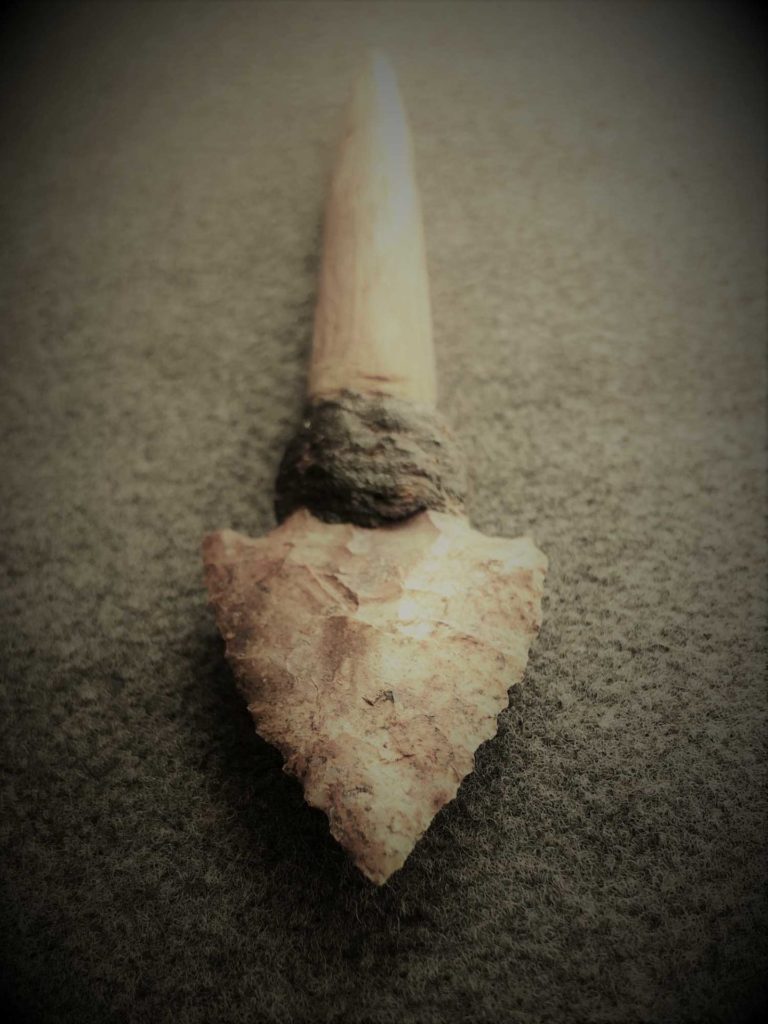
Placencia points are extremely broad and thin, and they are very well made. Makers used percussion flaking to make thin triangular points that have a straight to slightly expanding stem. The lateral margins of the stem are often heavily ground.
The concave base usually has basal thinning flakes extending up into the biface, not unlike the flutes on Clovis points. Above the base, the point has slightly rounded shoulders that angle down a bit and edges that are straight to slightly excurvate (curved outward) in shape.
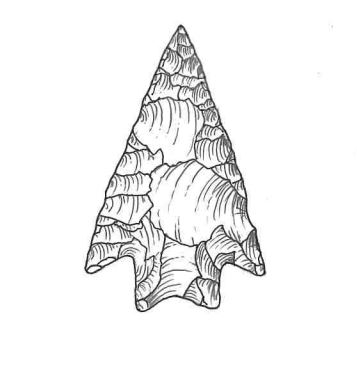
Most examples we have seen are broken, and many show signs of extensive reworking. It’s interesting to consider what animals were being hunted with such a broad point.
We’re not aware of excavated examples, so at present we can’t clearly determine what kinds of deposits they are usually associated with, though they are certainly quite ancient.
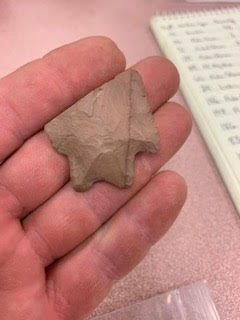
Allen has personally seen examples of these points in private collections from the Patagonia Mountains in southern Arizona. We know of about 20 examples of the point style from southern Arizona and Northern Mexico. Some examples are from three sites that also have Clovis materials. We suspect that there are many more examples in existing collections that have not yet been recognized as such.
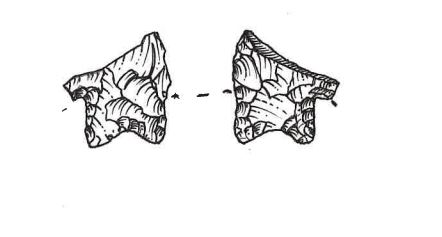
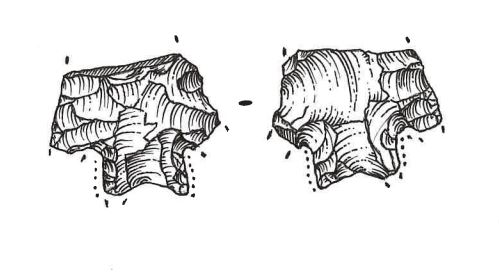
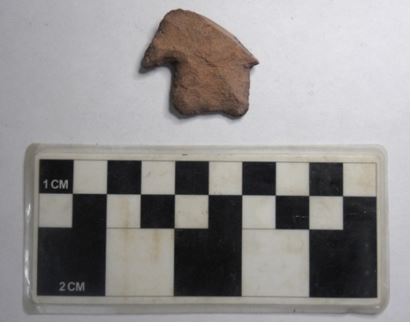
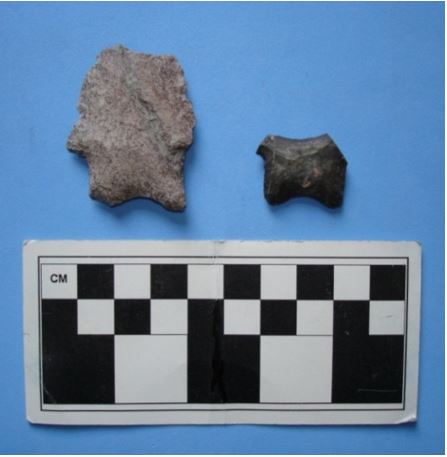
Below is a replica of a Placencia point Allen made out of stone gathered from Santa Cruz River gravels. It is hafted to a short stick to create a foreshaft. The large size and general antiquity of Placencia points indicate that hunters used them with some kind of atlatl weapon.
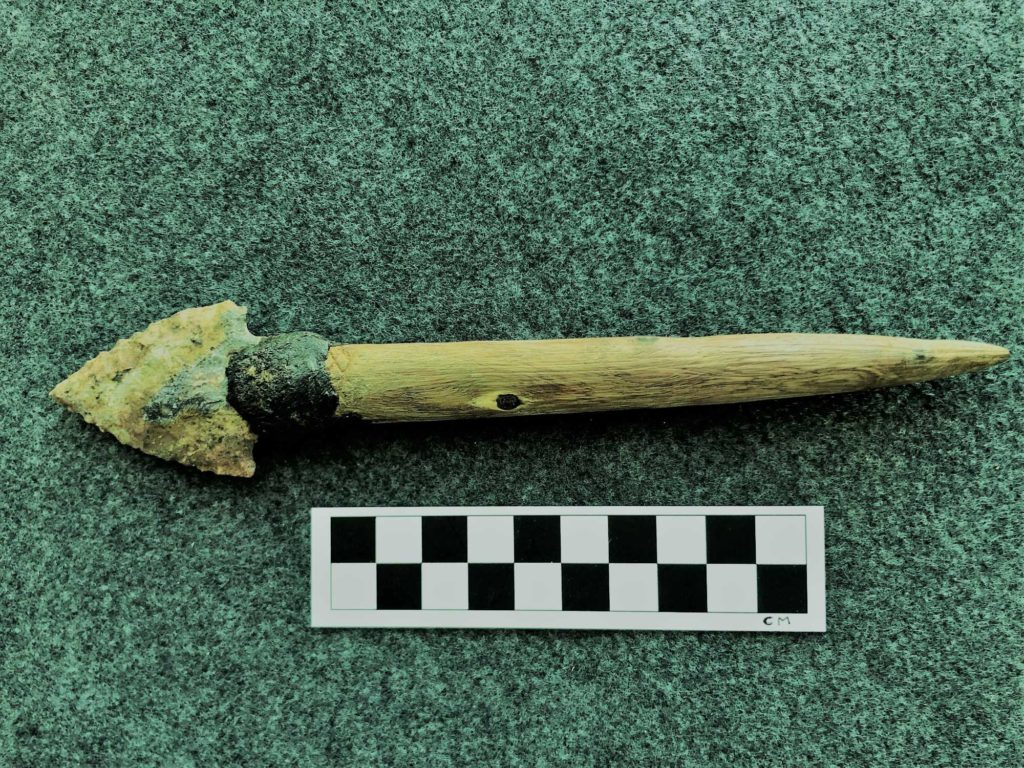
This next Placencia point (3 views) is from an unknown location in Arizona’s Safford Basin. It is from the Raymond J. Robinson Collection, which Archaeology Southwest volunteers are currently analyzing and preparing for curation at the Arizona State Museum.
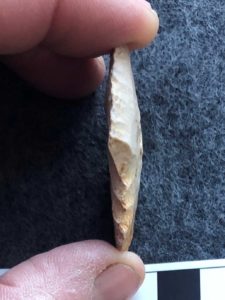
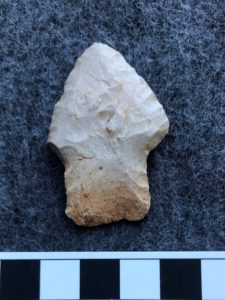
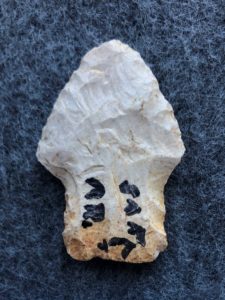
The point has been heavily reworked: one face has a large basal thinning flake, whereas the other face only has little pressure thinning flakes along the base. There is no grinding on the basal margins, but there is a tiny bit on the base. We think the basal margins were re-flaked, removing any evidence of grinding. Both ears are broken off, and it appears that the distal end has been re-sharpened many times. Note how this has beveled the edges over to the face on the labeled side on the point. This must have been a very large point when it was first made!
2 thoughts on “What’s the Point? The Newly Named Placencia Point”
Comments are closed.

WHY was it renamed ? That seems to go against usual naming conventions…
We changed the name to honor our friend Gustavo Placencia, owner of the ranch where El Fin del Mundo archaeological site (where the original Placencia point specimens were found) is located. The name ‘Fin del Mundo’ was only used in my original description of the type in my BA thesis. In all of our published works we refer to this type as Placencia.